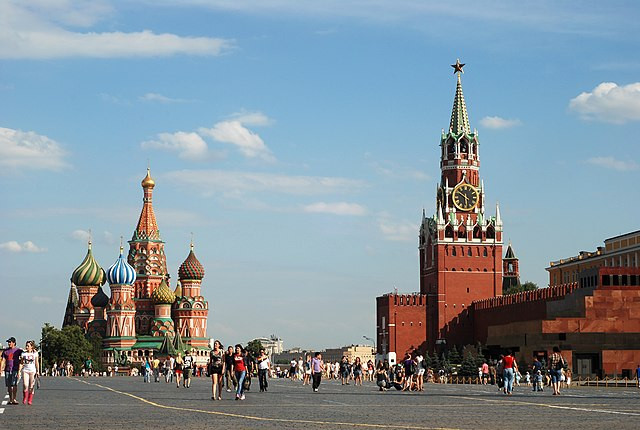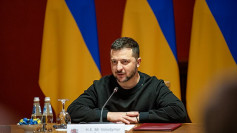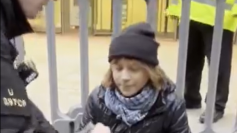Moscow was hit by one of the largest drone attacks on the Russian capital, marking a bold move by Ukrainian forces. On Wednesday, Russia's defense ministry reported that at least 11 drones were intercepted and destroyed over Moscow, while an additional 34 were taken down over other regions, including Bryansk, Belgorod, Kaluga, and Kursk.
The attack on Moscow, which Mayor Sergei Sobyanin described as "one of the largest attempts to attack Moscow using drones ever," is part of a broader strategy by Ukraine to extend its military operations into Russian territory. This marks a significant shift in the conflict, which had primarily been a battle across the fields and villages of eastern Ukraine. The drone strikes on Moscow follow a series of attacks targeting Russian infrastructure, including refineries and airfields, over the past months.
The escalation comes on the heels of Ukraine's successful advances in the Kursk region, where Ukrainian forces have seized strategic positions, including key bridges across the Seym River. Since launching its offensive into Russia on August 6, Ukraine has captured approximately 450 square kilometers of Russian territory. The objective, as stated by Ukrainian President Volodymyr Zelensky, is to create a "buffer zone" to prevent further cross-border attacks by Russian forces, disrupt Russian logistics, and weaken Moscow's war capabilities.
As part of their offensive, Ukrainian forces have employed a variety of tactics, including precision airstrikes and the use of small, hard-to-detect drones designed to crash into targets and explode. These drones have been particularly effective in disrupting Russian efforts to maintain control over the region, including the destruction of pontoon bridges that Russia hastily constructed to replace those destroyed by Ukrainian strikes.
Despite these significant military developments, Moscow has downplayed the severity of the situation. The Kremlin-controlled media has provided limited coverage of the Ukrainian incursion into Russian territory, with reports focusing on the humanitarian aspects of the conflict rather than the military implications. This approach mirrors President Vladimir Putin's restrained response to the crisis, as he has largely avoided public statements on the matter and has even embarked on routine diplomatic trips, including a visit to Azerbaijan, in an apparent attempt to project normalcy.
However, the scale and frequency of Ukrainian attacks, particularly the drone strike on Moscow, suggest that the situation is far from under control. The Russian government has been forced to take measures to protect its territory, including deploying additional troops to the Kursk region and issuing advisories to residents in border areas. The Russian Interior Ministry has warned residents and military personnel in the Bryansk, Kursk, and Belgorod regions to avoid using dating apps and social media to prevent Ukrainian forces from gathering intelligence.
The drone attack on Moscow is reminiscent of a similar incident in May 2023, when at least eight drones were intercepted over the capital in what Putin described as an attempt by Kyiv to "scare and provoke" Russia. The recent attack, however, underscores the growing reach and effectiveness of Ukrainian forces as they continue to push deeper into Russian territory.
As the conflict enters this new phase, the international community is watching closely. The Ukrainian advances and the bold strikes on Russian soil could prompt a reevaluation of Western support for Ukraine, particularly regarding the provision of advanced weaponry and intelligence. The U.S. Pentagon has acknowledged Ukraine's creativity and battlefield prowess, noting that Russian forces have struggled to respond effectively to the Ukrainian offensive.
The longer Ukraine's incursion into Russia continues, the more pressure will mount on the Kremlin to take decisive action. However, with its military resources stretched thin and its economy under strain from sanctions, Russia's options may be limited. The situation is likely to remain volatile as both sides continue to jockey for position in this increasingly complex and dangerous conflict.
For now, Moscow is trying to maintain an image of control, but the drone attacks and the ongoing Ukrainian offensive in Kursk are clear signs that the conflict is far from over. The question remains: how long can the Kremlin continue to downplay the situation before it is forced to confront the reality of Ukraine's growing military capabilities?






